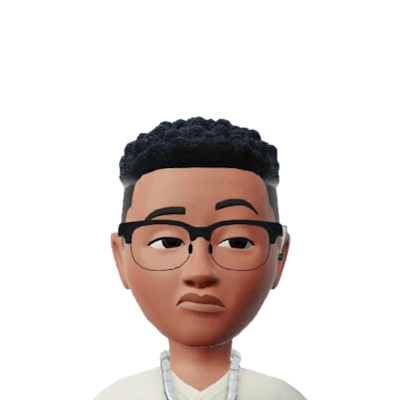Despite being one of the most popular web browsers, Google Chrome is not entirely free of bugs. Occasionally, the browser stops loading images, leaving only the alternative text. This issue can be caused by a slow internet connection, but if other browsers are working correctly and you are not downloading anything, troubleshooting is necessary.
There are various reasons why Chrome may fail to load images, such as inappropriate browser settings, an interfering extension, or an abundance of cached data.
Update Google Chrome
An outdated version of Google Chrome can cause numerous problems, including issues with loading images. While Chrome typically updates automatically, manually updating it can resolve bugs and include any recent improvements.
To update the browser, click the three-dot menu in the top-right corner, then navigate to Help > About Google Chrome. Chrome will either display the message "Chrome is up to date" or install any available updates.
If your issue persists, try the following solutions.
Use Incognito Mode
A conflicting browser extension might prevent images from loading. To test this, use incognito mode. Open the three-dot menu and select New Incognito window or press Ctrl + Shift + N.
If Chrome loads images in incognito mode, examine your installed extensions. Disable all extensions and re-enable them one by one to determine which extension is causing Chrome to display images incorrectly.
If you have to disable an extension that you frequently use and cannot find a replacement, you can create your own Google Chrome extension.
Check Chrome's Site Settings
To continue the troubleshooting process, check Chrome settings. If you notice broken image icons, you may have accidentally altered the privacy settings. Here's how to check:
Open Chrome's menu and navigate to Settings.
In the left pane, click Privacy and security.
Click Site Settings > Images.
Under "Default behavior," select "Sites can show images." Also, examine the "Customized behaviors" section to ensure you haven't prohibited any site from displaying images.
Allow Sites to Use JavaScript
Web developers use JavaScript to add visual elements to sites and provide other functionality. If you've disabled JavaScript in Chrome, the browser may struggle to load images. Follow these steps to re-enable JavaScript:
Go to chrome://settings.
Navigate to Privacy and security > Site Settings.
In the Content section, click JavaScript.
Set "Default behavior" to "Sites can use JavaScript."
Check if Chrome can display images.
5. Disable Hardware Acceleration
Chrome Hardware Acceleration is designed to make browsing smoother by using your computer’s GPU to handle graphics-intensive tasks. However, the feature is known to make the browser unstable, which might stop it from loading images.
To turn it off, launch the browser’s menu and go to Settings > System. There, switch off the toggle next to Use hardware acceleration when available.
6. Clear Chrome's Cache Data
Almost all browsers use cache data to improve loading times. However, if this data somehow gets corrupted, it could stop the browser from functioning properly. So, clearing your browser cache is worth a try to fix your problem.
7. Turn Off Reader Mode
Even if you haven’t installed any extensions to remove distractions such as images or videos while browsing, Chrome has a built-in feature to simplify web pages. If you switch between multiple browsers, there’s a chance you enabled it yourself and forgot about it.
To turn off reader mode, navigate to chrome://flags. There, search for Enable Reader Mode and set it to Default or Disabled.
Restart your browser and check if Chrome is now loading images.
8. Rename the Data Folder
Chrome could've stopped loading images because of corrupted files in its data folder. The easiest fix is to rename the current data folder so that Chrome will create a new one.
If you're using Windows 10, Press Windows key + R to bring up a Run dialog. Type %appdata% and press Enter. Then, navigate to Google > Chrome > User Data. There, locate and rename the Default folder. You can do the same on different operating systems, though steps will vary.
Sometimes, it’s difficult to identify why files get corrupted, but if it keeps happening, you should scan your entire system for corrupted or damaged files.
9. Reset Google Chrome
If you have tried anything and Chrome is still not loading images, it's time to reset it. You will remove any extensions, cache, and history by doing it. However, Chrome will preserve your bookmarks and passwords, so you don't have to worry about losing access to important sites.
Here's how you can reset Chrome:
Go to chrome://settings.
Select Reset and clean up from the left pane.
Click Restore settings to their original defaults > Reset settings.
10. Try a Different Chromium Browser
If Chrome still fails to load images, you should try a different Chromium browser. Fortunately, there are plenty of Chromium browser alternatives better than Chrome that you could try without losing the best Chrome features and extensions.
Besides solving your browser's inability to load images, you'll also have a browser that's more focused on user's privacy.
11. Check DNS Settings
As you may know, the Domain Name System (or DNS) transforms domain names into IP addresses to send and receive data. So, if there’s something wrong with your DNS settings, Chrome might have a hard time loading images.
Fortunately, you can check which DNS server you’re using and even change the DNS server for better internet speed.
Bring Images Back to Chrome
Hopefully, one or more solutions in our guide helped you fix the problem. If you have tried using other browsers and encountered the same problem, you need to dig deeper. Check your internet connection, OS version, look for driver updates, and run a scan for malware.
If you've managed to fix Chrome's inability to load images, there's no reason to stop here when it comes to improving its functionality. There are plenty of Chrome extensions that you could use to personalize Chrome and elevate your browsing experience.

